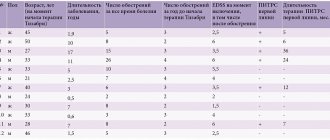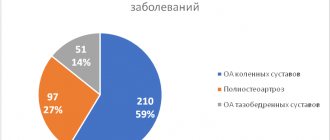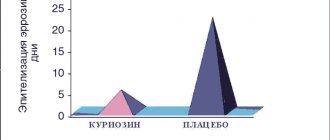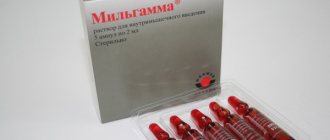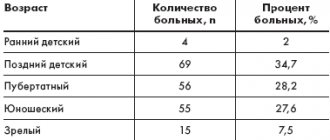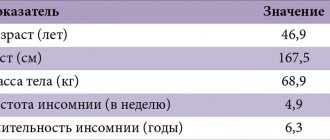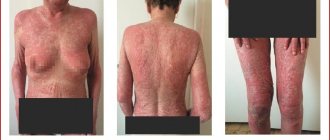When a “cold” appears on the lips, it is always unpleasant. But similar rashes in the nose are many times more unpleasant. And not only because this is a very unsightly phenomenon from an aesthetic point of view (swelling in the area of the nasolabial triangle, swelling, ulceration), but also because it causes a lot of practical inconvenience, for example, the inability to painlessly clear the nose with a runny nose, and about itching and the desire to comb the area of the rash goes without saying. Of course, all this significantly worsens the quality of life, affecting not only the patient’s personal life, but also his ability to work. What are the reasons for the appearance of herpes in the nasal cavity? How to treat these rashes? How quickly can you get rid of the “sore”? How to prevent the appearance of herpetic sores? What medications should be used for such manifestations of the virus? We will try to cover these and other questions in this article.
- How does infection occur?
- Causes of manifestation and exacerbation
- Symptoms and signs
- Treatment of HSV in the nose: In children
- In pregnant women
- In adults
There are two known types of herpes simplex virus - type 1 (HSV-1) and type 2 (HSV-2). Both types are extremely contagious. Thus, according to the World Health Organization (WHO), in 2015, more than 3.7 billion people under the age of 50, or 67% of the world’s population, were infected with herpes simplex virus type 1 (HSV-1). Previously, type 1 virus was called orofacial, because it was believed that it was it that caused manifestations of the disease on the face, and type 2 virus was genital. At the moment, this classification is no longer relevant, since it has been proven that both of these viruses can cause rashes, both on the face and genitals. Both types are unable to survive for long outside the host's body. However, microorganisms often remain active on surfaces and household items throughout the day.
How does infection occur?
Most often, infection occurs through close contact with a carrier (hugs, kisses, etc.). At the same time, the carrier himself may not realize that he is a carrier of the infection, since manifestations of the virus (bubble rashes on the mucous membranes) occur when the immune system is weakened, caused, for example, by attacks by ARVI or influenza viruses. A healthy person can become infected with this infection not only through direct contact, but also when using someone else’s personal hygiene items (towel, lipstick, cream, etc.) or utensils that the carrier had recently used. The mechanism of virus penetration into the body is as follows: HSV does not remain on the surface, on the skin or mucous membranes, but is embedded in the DNA of nerve cells, thus remaining “invisible” to the human immune system. That is why there is no medicine that can “stop herpes forever.” This infection becomes noticeable when a person’s general immunity decreases, when the virus goes beyond the nerve cells and begins to multiply. This explains the exacerbation of the disease. It is at this point that the use of antiviral drugs, both local and systemic, is justified.
During the period of virus reproduction, the carrier becomes the most dangerous to others. But this does not mean that any direct contact with an infected person leads to infection of another person. For herpes to enter the body, the following conditions are necessary:
- Damaged skin: with wounds, scratches, cracks, allergic manifestations;
- Contact of mucous membranes with the carrier (kiss);
- Decreased immune defense.
Herpferon
Herpferon is a domestic antiviral drug for local and external use. In addition to actually being antiviral, it has anti-inflammatory, analgesic and immunomodulatory effects. It is used for various types of herpes, including genital and herpes zoster.
Currently, there are more than 100 types of herpeviruses in the world, of which a good dozen pose a real danger to our lives. The uniqueness of herpes viruses is that they persist in the human body throughout its entire life cycle. This becomes possible due to the ability of viruses to “hibernate” in the nerve ganglia. Among all herpeviruses, the greatest threat is posed by the herpes simplex virus (in medical literature it is abbreviated as HSV, unwittingly leading to a criminal analogy with OPG, which, by and large, is not so far from the truth), which exists in the form of two types: HSV-1 (attacking face and oral mucous membranes) and HSV-2 (usually affecting the genitals). Today, more than 90% of people carry this virus. Moreover, about 10% of them suffer from persistent relapses of the disease, which is more true for genital herpes. The latter places a heavy burden on the public health care system, because... can cause female and male infertility, spontaneous abortion, infection of the fetus or newborn. Another extremely dangerous type of herpes virus is Herpes zoster or herpes zoster, which is expressed by damage to the central system. The disease occurs in representatives of any age group, but most often it affects people who have already celebrated their half-century anniversary. The drug herpferon, produced in the form of an ointment, is an effective drug for combating the herpes virus. It contains human recombinant interferon alpha-2, acyclovir and lidocaine. According to the manufacturer of the drug, a Russian biotechnological company, herpferon has no analogues in the world.
Interferon alpha-2 exhibits a pronounced antiviral effect: it inhibits the reproduction of the virus in affected cells. In addition, the drug exhibits immunomodulatory activity, since against the background of its action there is an activation of macrophages in the affected area. Acyclovir also has a fairly strong antiviral effect. To a greater extent, its activity is manifested against HSV types 1 and 2 and herpes zoster. The third component of herpferon, lidocaine, has a local anesthetic and weak antipruritic effect. In addition, the herpferon ointment contains polyethylene oxides, which increase the duration of action of the drug and stabilize the condition of all its ingredients. This combination of active substances provides an accentuated antiherpetic effect: prevents the spread of rashes, accelerates regeneration, and relieves pain. Clinical studies of the drug confirmed the legitimacy of the combination of the above biologically active components in one dosage form: thus, pharmacologists managed to solve a number of problems and endow their pharmacological “brainchild” with several useful functional characteristics (antiviral, immunomodulatory, anti-inflammatory and analgesic activity). When using herpferon, a pronounced analgesic effect was observed due to the presence of lidocaine in its composition, which significantly increased the patient’s quality of life. The high efficiency and safety of the drug was experimentally confirmed, incl. with relapses of viral infections. In patients on a course of herpferon, headaches and general malaise stopped much earlier, itching and hyperemia at the site of the rash disappeared, i.e. the total duration of the disease was reduced.
Herpes on the nose: causes of manifestation and exacerbation
As with herpes on the lips, manifestations in the nasal area are caused by viruses of types 1 and 2. The infection may go unnoticed and appear weeks or even months later.
Typically, an exacerbation of infection is provoked by the following circumstances:
- overheating (on the beach in summer) or hypothermia;
- viral or bacterial diseases;
- unbalanced diet;
- stress, destructive situations;
- alcohol abuse, smoking;
- lack of vitamins;
- exacerbation of chronic diseases;
- long course of antibiotics;
- Women may experience infection during menstruation.
Herpes on the nose: symptoms and signs
It must be said that the rashes are not typical. Herpes in the nose manifests itself differently than, say, on the lips. During an exacerbation, a conglomerate rash usually appears in this zone, which has a thicker “crusty” outer layer. It is formed by epithelial cells. Outwardly, such a rash resembles abscesses rather than blisters that appear with a herpes rash on the lips.
On the wings of the nose, white (sometimes light pink or yellowish) bubbles up to 5 mm in diameter can form.
Note that if herpes first appeared in the nasal area (in the nasal cavity or on the tip of the nose), then in case of relapses, the infection will most likely appear there.
Typically, symptoms of the disease appear inside the nose. There appears redness, itching, slight hyperemia, against which small blisters appear. There can be more than a dozen of them in one conglomerate. They are located close to each other. At first they are filled with a clear liquid, which after a while becomes dark. If the formations are not touched (do not scratch, do not open), then after a while they will dry out on their own and disappear under a gray-yellowish crust. This “sore” will disappear on its own in a few days. A stain will remain in its place, which will acquire a natural shade over time. This process can take from one to several weeks, since the disappearance of rashes in one place does not guarantee that they will not appear in another.
If you accidentally damage the bubbles, the process may take longer. In addition, an inflammatory process may begin on the damaged surface, which in turn is fraught with erosion of the mucous membrane and ulceration. These processes may be accompanied by severe itching, burning and pain. In this case, there is a danger of a secondary, often bacterial, infection. Accordingly, this aggravates the patient’s situation and requires additional treatment.
How to treat a nose infection?
Like any other disease, herpes requires consultation with a specialist. If rashes often appear on the wings of the nose, under the nose or inside, you should contact an immunologist.
Traditionally, there are two approaches to treating rashes. The first approach is to prescribe acyclovirii or its derivatives. This group of drugs has its pros and cons. Before use, you must carefully study the instructionsiii, since there are a sufficient number of contraindications and side effects on the body. For example, it is prescribed to pregnant or lactating women with close supervision by a doctor. There are restrictions for use in patients with health problems (for example, kidney or liver failure).
Over time, resistance to these drugs may develop (that is, the herpes adapts or does not respond to this drug at all). The principle of action of acyclovir is the destruction of the DNA of the virus and its ability to reproduce.
The second approach is control over relapses, that is, the use of drugs that can have both an antiviral effect and support the immune system, keeping herpes in a “dormant” state. Various immunomodulatory or antiviral drugs can be used to carry out therapy. One of these drugs is the drug VIFERON. It simultaneously has antiviral and immunomodulatory effects. It is also important to know that this drug is recommended by the standards (protocols) of medical care for the treatment of herpes infection.
How to treat herpes in a child's nose
It is worth remembering that when choosing a drug to relieve symptoms such as herpes on the nose, you should consult a doctor, since many antiviral drugs, especially those based on acyclovir, have contraindications for children under 12 years of age. With frequent relapses of the disease in a child, doctors prescribe complex treatment, always with courses of antiviral drugs. For example, the drug VIFERON can be used in suppositories, which is approved for children from the first days of life. VIFERON in the form of rectal suppositories should be administered to the child into the rectum (that is, rectally). According to the instructions, the treatment regimen is as follows: for 5 days, a suppository in a dosage of 150,000 IU is administered once every 12 hours.
For premature newborns with a gestational age of less than 34 weeks, it is recommended to use the drug VIFERON suppository 150,000 IU daily, 1 suppository 3 times a day after 8 hours.
Treatment of herpes in pregnant women
During pregnancy, it is more difficult to cure herpes on the nose, since many anti-inflammatory and antiviral drugs are prohibited due to the possibility of unwanted side effects during pregnancy and effects on the fetus. Therefore, before using any product, you should consult a doctor. Most often during pregnancy, she prescribes local antiviral ointments or gels.
Viferon Gel
For example, VIFERON gel. It is better to start therapy at the first signs (itching and burning). Squeeze out a strip of gel no more than 0.5 cm long, apply it with a cotton swab or cotton swab onto the previously dried affected surface, apply 3-5 times a day. Treatment lasts 5-6 days and can be continued until clinical manifestations disappear. Treatment can and should be started even if the rash has already begun. For rashes on the nasal mucosa, the gel is applied after cleansing the nasal passages.
Viferon Candles
If herpes manifests itself frequently, then systemic treatment using VIFERON rectal suppositories is recommended. Their use, according to the instructions, is possible from the second trimester of pregnancy (starting from the 14th week of gestation). Course: VIFERON 500,000 IU, 1 suppository 2 times a day. after 12 hours every day for 10 days, then 1 suppository 2 times a day. after 12 hours every fourth day for 10 days. Then every 4 weeks until delivery - 150,000 IU, 1 suppository 2 times a day. every 12 hours every day for 5 days. If necessary, it is indicated before delivery (from the 38th week of gestation) 500,000 IU, 1 suppository 2 times a day. every 12 hours every day for 10 days.
Thus, the inclusion of the drug VIFERON Rectal Suppositories in the complex therapy of pregnant women with HSV-1 HSV-2 helps reduce the duration of the disease from 10.2 to 6.8 days; reducing the number of pregnancy complications (threat of miscarriage from 62% to 31.9%; polyhydramnios from 30.3% to 10%; oligohydramnios from 28.4% to 9% and preeclampsia from 40% to 16.7%), reducing the frequency of relapses of concomitant bacterial vaginosis by more than 1.5 times (mycoplasma and ureaplasma) vi.
Herpes on the nose: treatment in adults
If the frequency of manifestations of the disease in an adult is high, then doctors will recommend complex treatment for such a patient, including immunomodulatory drugs, including, as mentioned above, the drug VIFERON. It is worth noting that the form of delivery of the active substance to the body (rectal suppositories) does not create additional stress on the stomach and liver, which is important for patients who are already taking other drugs to treat concomitant diseases. This is especially true for older people.
The recommended dose for adults is 1,000,000 IU, 1 suppository 2 times a day every 12 hours every day for 10 days or more for recurrent infections. According to clinical indications, therapy can be continued. It is better to start treatment immediately when the first signs of damage to the skin and mucous membranes appear (itching, burning, redness). For recurrent infections, it is advisable to begin treatment in the prodromal period.
The article “New aspects in the treatment of herpes simplex” vii noted that during therapy with the drug VIFERON, there was a rapid relief of clinical manifestations of exacerbation of the disease. The time for regression of rashes decreased on average by 5–7 days. As a result of clinical observation of patients for 1 year after the end of therapy, it was noted that VIFERON, with long-term use, also has a preventive effect. A 3–4-fold reduction in the relapse rate was recorded in 69% of patients.
If signs of infection appear, treatment with suppositories can be accompanied by the use of VIFERON gel, which alleviates the symptoms and improves the quality of life.
Herpferon: experience of use for herpes virus infection
Herpes viruses are widespread in the population. They cause various diseases of the skin, mucous membranes, eyes, central nervous system and internal organs. The use of local antiviral drugs is justified by the large number of active forms of the pathogen at the sites of rashes, the soreness of the lesions and the insufficiency of local immunity and endogenous interferon. The combined drug Gerpferon®, in addition to dual antiviral (interferon alfa-2b + acyclovir), also has analgesic and antipruritic effects (lidocaine). Research results and our own clinical experience show the high effectiveness and safety of the drug, which in turn contributes to a significant improvement in the quality of life of patients.
Herpesvirus infections are a group of anthroponotic diseases caused by viruses of the Herpesviridae
and characterized by a chronic relapsing course and lifelong persistence of the pathogen in the body [1].
Herpes viruses are widespread in the population. They cause a variety of diseases of the skin, mucous membranes, eyes, central nervous system and internal organs [2–6, 7].
The use of local antiviral drugs, both in combination with systemic therapy [3] and separately for localized mucocutaneous forms [8], is due to the large number of active forms of the pathogen at the sites of rashes, painful lesions and insufficiency of local immunity and endogenous interferon [9]. One of the medications that combines antiviral and immunomodulatory effects and is used topically and externally is Gerpferon® ointment (ZAO Firn M, Russia).
The pharmacological properties of Gerpferon are determined by its composition:
- interferon alpha-2b human recombinant 20,000 IU/g – antiviral and immunomodulatory agent;
- acyclovir 30 mg/g – antiviral agent;
- lidocaine hydrochloride 10 mg/g – local anesthetic, antipruritic.
This combination enhances the pharmacotherapeutic effect and expands the range of use of the drug compared to single-component interferon and acyclovir in the form of an ointment. In addition, the inclusion of polyethylene oxides as excipients ensures stabilization of the active substances, duration of action of the drug and better penetration into the skin [10, 11].
Gerpferon® is available in aluminum tubes containing 5, 10 and 30 g of ointment.
During preclinical tests conducted at the Institute of Engineering Immunology on laboratory animals and cell cultures, no symptoms of acute or chronic toxicity or local irritation were observed. At the same time, the drug has been shown to be highly effective in a model of experimental herpes [7, 10, 12].
Clinical studies on the basis of the Nizhny Novgorod State Medical Academy and Saratov State Medical University named after. IN AND. Razumovsky (2003) convincingly proved the safety and good tolerability of the drug, and established its high effectiveness, especially in recurrent disease [7, 10, 12].
Many years of experience with the use of Gerpferon have confirmed its effectiveness and safety in the treatment of primary and recurrent lesions of the skin and mucous membranes in genital and herpes zoster [1, 7, 12–15].
So, in 2012–2013. The Department of Dermatovenerology and Cosmetology of the Omsk State Medical Academy, on the basis of the clinical dermatovenerological dispensary, conducted a direct open study of the effectiveness and safety of the drug Gerpferon®. The study involved 40 patients with recurrent orofacial (first group) or genital (second group) herpes of mild or moderate severity in the acute phase [13]. Patients of the first group used only Gerpferon®. The ointment was applied to the affected areas of the skin and mucous membranes in a thin layer five times a day for five to ten days until the clinical signs of the disease disappeared. The second group used a drug containing valacyclovir (orally at a dose of 500 mg twice a day for three to five days), and Gerpferon® on the affected areas of the skin and mucous membranes (a thin layer four to five times a day for five to ten days ) until the clinical signs of the disease disappear. The patient with a lesion localized to the skin of the thigh received Herpferon monotherapy in a similar regimen.
Based on the results obtained and analysis of the experience of using Gerpferon, the authors made a reasonable conclusion about the high effectiveness of this drug. Thus, against the background of Herpferon monotherapy, clinical recovery of relapses of orofacial herpes occurred in 100% of cases on the fifth – seventh day; recurrent rashes and secondary infections were not observed. During therapy with Herpferon® in combination with other antiviral and immunomodulatory drugs, clinical recovery of relapses of genital herpes occurred in 100% of cases on the seventh to tenth day; recurrent rashes and secondary infections were not recorded.
Moreover, already on the second day of therapy, almost all patients noted a pronounced decrease in pain.
The economic component also turned out to be important - one tube (5 g) was enough to treat an episode of herpetic infection.
Data have been obtained on the effectiveness of the drug Herpferon® (five times a day for ten days) in combination with anti-inflammatory and immunomodulatory drugs and for Kaposi's eczema herpetiformis as a result of complications of atopic dermatitis [14].
Our own clinical experience of using the drug Gerpferon® in 40 patients aged 17 to 50 years with herpetic infection (orofacial, genital, herpes zoster), observed in medical institutions in Ivanovo (medical, antenatal clinic No. 7, Ivanovo Regional Dermatovenerological Dispensary ) for 2013–2014, indicates that already on the third day of therapy in most patients there is a significant improvement in condition. They observed a decrease in the intensity of local manifestations (ulceration, redness, swelling, pain and burning), and the absence of new rashes.
Most patients noted a decrease in pain in the lesion on the first or second day of treatment.
Resolution of the process occurred on average in 7.2 ± 0.6 days, that is, within the recommended period for the treatment of orofacial and herpes zoster [16].
Within a year after treatment, no manifestations of herpetic infection were recorded.
A survey of patients showed that some of them (with recurrent herpes) used this drug for preventive purposes in case of significant fatigue, overexertion and hypothermia. At the slightest discomfort, tingling or burning sensation, the ointment was applied to the areas of previous rashes for one or two days, three to four times a day.
The pathogenetic justification for the prophylactic use of Herpferon can be the fact that during electron microscopy histological biopsies revealed the causative agent of herpes infection - a provirus in the epithelial cells of the skin and mucous membranes in lesions during previous relapses [9], which may be places of increased risk.
It is important to note that no adverse events were recorded during the therapy.
Thus, patients with herpetic infection (orofacial, genital, herpes zoster) can be recommended Herpferon®, an ointment for local and external use, both in the form of mono- and in the form of combination therapy with other anti-inflammatory and immunomodulatory agents. The advantages of Gerpferon are dual antiviral and local anesthetic effects. In addition, the drug quickly relieves itching. Thanks to the complex effect, the effectiveness of treatment increases and, as a result, the quality of life of patients significantly improves.
